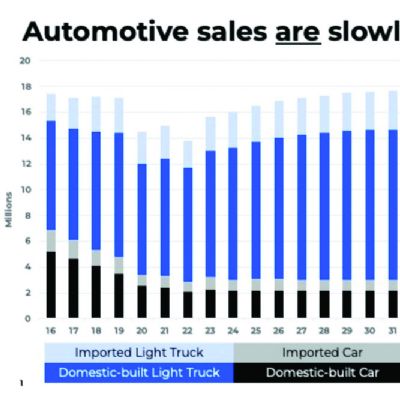Firefighting
September 26, 2022Comments
Early on during my Die Maintenance and Troubleshooting technical seminars, conducted for the Precision Metalforming Association (PMA), I define the differences between repair and maintenance, and then ask attendees, “How many of you have a formal die-maintenance program at your facility?” Most hands in the room go up. I follow with, “Now that you understand the differences between maintenance and repair, how many of you would say that your organization spends sufficient time maintaining your dies and equipment?” Few, if any, hands remain up.
The main reason cited by attendees for the lack of die maintenance: “There is no time, we’re always putting out fires (making repairs).” Most of their daily interactions revolve around events taking place that day, such as delivering a hot order to a customer, getting a machine running, or repairing/replacing a broken die. Anyone having experienced these interactions understands the intense focus on today's performance with little regard given to what will happen tomorrow, next week or next month. Management’s attitude: “Get it done now, we can’t miss today’s shipment; we'll worry about tomorrow later.” In these cases, supervisors respond by pulling out all of the stops—ignoring protocols, reassigning responsibilities or performing other people's tasks for them—to get the job done. This creates two possible outcomes: They extinguish the fire, or they justify why they couldn’t.
The first outcome earns glowing praise from management for being an excellent firefighter. The second leads to questioning and a defensive position, but in the supervisor's eyes it avoids a reprimand, and so is perceived as a success.
Symptoms of Firefighting
“Most supervisors earn promotion to their roles due to their strong technical aptitude and extensive experience—the exact skill set required to fight fires! But this differs greatly from the skill set required to identify and resolve systemic problems.”
According to an August 2000 Harvard Business Review article, “Stop Fighting Fires,” firefighting can be characterized as a collection of symptoms. Chronic presence of three of the following linked elements define your organization as suffering from firefighting:
- Not enough time to solve all problems—more problems than the problem solvers (engineers, managers, or other knowledge workers) properly can handle.
- Incomplete solutions—many problems are patched, not solved, i.e., superficial effects are dealt with, but without fixing the underlying causes.
- Problems recur and cascade—incomplete solutions cause old problems to reemerge or create new problems, sometimes elsewhere in the organization.
- Urgency supersedes importance—ongoing problem-solving efforts and long-range activities, such as developing new processes, repeatedly are interrupted, or deferred, because fires must be extinguished.
- Many problems become crises. Problems smolder until they flare up, often just before a deadline, then require heroic efforts to solve.
- Performance drops. Overall business performance plummets, with so many opportunities forgone, due to inadequate resolution of so many problems.









